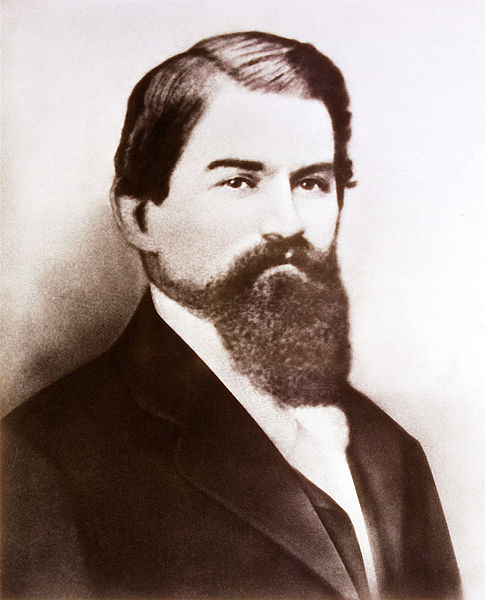|
Kingdom (Koda Kumi Album)
''Kingdom'' is the sixth studio album by Japanese singer-songwriter Kumi Koda. It was released on January 30, 2008, a week after her single '' anytime''. The album debuted at No. 1 on the Oricon Weekly Charts with sales of 421,302. It remained on the charts for thirty-three weeks. The album was released in four editions: CD, CD+DVD, CD+2DVD and CD+2DVD+Poster, with limited editions of all versions carrying the bonus track ''Black Cherry.'' Kingdom has been certified triple platinum by RIAJ for shipment of 750,000 copies in Japan. Information ''Kingdom'' is Japanese singer-songwriter Koda Kumi's sixth studio album and tenth album overall. It was released on January 30, 2008, a little over a year after her previous studio album, ''Black Cherry.'' The album was her fourth consecutive album to claim the No. 1 spot on the Oricon Albums Charts, continuing her streak, which began in early 2005 with her '' Best ~first things~'' album. It contained new material and was her first album to ... [...More Info...] [...Related Items...] OR: [Wikipedia] [Google] [Baidu] |
Kumi Koda
, known professionally as , is a Japanese singer from Kyoto, known for her urban and R&B songs. After debuting with the single "Take Back" in December 2000, Koda gained fame in March 2003 when the songs from her seventh single, "Real Emotion/1000 no Kotoba", were used as themes for the video game ''Final Fantasy X-2''. Her popularity grew with the release of her fourth studio album ''Secret'' (2005), her sixteenth single "Butterfly" (2005), and her first greatest hits album '' Best: First Things'' (2005), reaching the number-three, number-two, and number-one spots respectively. Though her early releases presented a conservative, quiet image, she has become a fashion leader among young women, setting trends such as the ero-kakkoii style. In 2006 and 2007, Oricon named Koda as the top selling artist of the year. Life and career Early life Koda was born into a family of musicians. Her grandfather was a Shakuhachi master and her mother was a Koto teacher; she is the older ... [...More Info...] [...Related Items...] OR: [Wikipedia] [Google] [Baidu] |
Yokohama Arena
is an indoor arena located in Yokohama, Kanagawa Prefecture, Japan. The capacity of the arena is 17,000 and was opened in 1989. The arena was modeled after US sports venue Madison Square Garden in New York City. It is a five-minute walk from the closest station, Shin-Yokohama Station on the JR/Yokohama Municipal Subway. As one of the largest concert venues in the Kantō region, it is a frequent location for artists to end their tours. The spacious stage allows for more complex set design and lighting, but the reasonable size makes it easier to sell out than the Tokyo Dome. History The Yokohama Arena was opened on April 1, 1989. At the exact day was held the opening celebration concert where performed renowned Japanese singer-songwriter Yumi Matsutoya, and the three upcoming days were additional dates of her concert tour. Many notable Japanese music acts performed at the arena, alphabetically: AKB48, Namie Amuro, Aqours, B'z, Babymetal, Buck-Tick, °C-ute, Gackt, The Gazette ... [...More Info...] [...Related Items...] OR: [Wikipedia] [Google] [Baidu] |
Second Session
The second (symbol: s) is the unit of time in the International System of Units (SI), historically defined as of a day – this factor derived from the division of the day first into 24 hours, then to 60 minutes and finally to 60 seconds each (24 × 60 × 60 = 86400). The current and formal definition in the International System of Units ( SI) is more precise:The second ..is defined by taking the fixed numerical value of the caesium frequency, Δ''ν''Cs, the unperturbed ground-state hyperfine transition frequency of the caesium 133 atom, to be when expressed in the unit Hz, which is equal to s−1. This current definition was adopted in 1967 when it became feasible to define the second based on fundamental properties of nature with caesium clocks. Because the speed of Earth's rotation varies and is slowing ever so slightly, a leap second is added at irregular intervals to civil time to keep clocks in sync with Earth's rotation. Uses Analog clocks and watches often have ... [...More Info...] [...Related Items...] OR: [Wikipedia] [Google] [Baidu] |
Kingdom
Kingdom may refer to: Monarchy * A type of monarchy * A realm ruled by: **A king, during the reign of a male monarch **A queen regnant, during the reign of a female monarch Taxonomy * Kingdom (biology), a category in biological taxonomy Arts and media Television * ''Kingdom'' (British TV series), a 2007 British television drama starring Stephen Fry * ''Kingdom'' (American TV series), a 2014 US television drama starring Frank Grillo * ''Kingdom'' (South Korean TV series), a 2019 South Korean television series *'' Kingdom: Legendary War'', a 2021 South Korean television series Music * Kingdom (group), a South Korean boy group * ''Kingdom'' (Koda Kumi album), 2008 * ''Kingdom'' (Bilal Hassani album), 2019 * ''Kingdom'' (Covenant Worship album), 2014 * ''Kingdoms'' (Life in Your Way album), 2011 * ''Kingdoms'' (Broadway album), 2009 * ''Kingdom'' (EP), a 1998 EP by Vader * "Kingdom" (song), a song by David Gahan on his 2007 album ''Hourglass'' * "Kingdom", a song by Battl ... [...More Info...] [...Related Items...] OR: [Wikipedia] [Google] [Baidu] |
Fuji News Network
Fuji News Network (FNN) is a Japanese commercial television network run by Fuji Television Network, Inc., part of the Fujisankei Communications Group. The network's responsibility includes the syndication of national television news bulletins to its regional affiliates, and news exchange between the stations. Distribution of non-news television programmes is handled by Fuji Network System (FNS), another network set up by Fuji TV. History The network formed in October 3, 1966 which comprised 7 television stations: Fuji TV (the flagship station), Sendai Television, Tōkai TV, Kansai TV, Hiroshima Telecasting (now affiliated with NNN and NNS), Nihonkai Telecasting, and Television Nishinippon Corporation. Presently the network has 26 full members, and two (Television Oita System Co., Ltd and TV Miyazaki). In terms of the number of participating stations, it is the third largest in Japan, following NNN ( NTN group) and JNN ( TBS-group). FNS does not currently have any affili ... [...More Info...] [...Related Items...] OR: [Wikipedia] [Google] [Baidu] |
Coca-Cola
Coca-Cola, or Coke, is a carbonated soft drink manufactured by the Coca-Cola Company. Originally marketed as a temperance drink and intended as a patent medicine, it was invented in the late 19th century by John Stith Pemberton in Atlanta, Georgia. In 1888, Pemberton sold Coca-Cola's ownership rights to Asa Griggs Candler, a businessman, whose marketing tactics led Coca-Cola to its dominance of the global soft-drink market throughout the 20th and 21st century. The drink's name refers to two of its original ingredients: coca leaves and kola nuts (a source of caffeine). The current formula of Coca-Cola remains a closely guarded trade secret; however, a variety of reported recipes and experimental recreations have been published. The secrecy around the formula has been used by Coca-Cola in its marketing as only a handful of anonymous employees know the formula. The drink has inspired imitators and created a whole classification of soft drink: colas. The Coca-Cola Company p ... [...More Info...] [...Related Items...] OR: [Wikipedia] [Google] [Baidu] |
Amniotic Fluid
The amniotic fluid is the protective liquid contained by the amniotic sac of a gravid amniote. This fluid serves as a cushion for the growing fetus, but also serves to facilitate the exchange of nutrients, water, and biochemical products between mother and fetus. For humans, the amniotic fluid is commonly called water or waters (Latin liquor amnii). Development Amniotic fluid is present from the formation of the gestational sac. Amniotic fluid is in the amniotic sac. It is generated from maternal plasma, and passes through the fetal membranes by osmotic and hydrostatic forces. When fetal kidneys begin to function around week 16, fetal urine also contributes to the fluid. In earlier times, it was believed that the amniotic fluid was composed entirely of fetal urine. The fluid is absorbed through the fetal tissue and skin. After 22 to 25 week of pregnancy, keratinization of an embryo's skin occurs. When this process completes around the 25th week, the fluid is primarily absor ... [...More Info...] [...Related Items...] OR: [Wikipedia] [Google] [Baidu] |
All Night Nippon
is a Japanese radio program broadcast by Nippon Broadcasting System and other radio stations from 1–5 am (JST). It preempts broadcasts from TBS Radio's programming heard on stations under both JRN and NRN (TBC Radio, CBC Radio, etc.). DJs The day of the week below are for the evening preceding in Japan, i.e. day in UTC. * Mondays – Thursdays, 13:00 UTC – 15:00 UTC with "All Night Nippon Music 10 (オールナイトニッポンMUSIC10)" (aired on 11 radio stations in Japan) ** Mondays: Ryoko Moriyama ** Tuesdays: Anju Suzuki ** Wednesdays: Yuko Natori (first and third Wednesday), Chisato Moritaka (second Wednesday), Kaori Kishitani (fourth Wednesday) ** Thursdays: Marina Watanabe * Mondays – Saturdays, 16:00 UTC – 18:00 UTC with "All Night Nippon (オールナイトニッポン)" (aired on 36 radio stations in Japan) ** Mondays: Creepy Nuts ** Tuesdays: Gen Hoshino ** Wednesdays: Nogizaka46 ** Thursdays: Ninety-nine ** Fridays: Shimofuri Myojo ** ... [...More Info...] [...Related Items...] OR: [Wikipedia] [Google] [Baidu] |
Tokyo Dome
is an indoor stadium in Bunkyo, Tokyo, Japan. It was designed as a baseball stadium following its predecessor, Korakuen Stadium. Construction on the stadium began on May 16, 1985, and it opened on March 17, 1988. It was built on the site of the Velodrome, adjacent to the predecessor ballpark, Korakuen Stadium. It has a maximum total capacity of 57,000 depending on configuration, with an all-seating configuration of 42,000. Tokyo Dome's original nickname was "The Big Egg", with some calling it the "Tokyo Big Egg".Haberman, Clyde Some Doubts, a Tokyo Dome New York Times, March 23, 1988 Its dome-shaped roof is an air-supported structure, a flexible membrane supported by slightly pressurizing the inside of the stadium. It was developed by Nikken Sekkei and Takenaka Corporation. It was modeled after the Hubert H. Humphrey Metrodome. It is the home field of the Yomiuri Giants baseball team. On March 18, 1988, the day after the Tokyo Dome opened, the Yomiri Giants held the game as t ... [...More Info...] [...Related Items...] OR: [Wikipedia] [Google] [Baidu] |
Black Cherry
{{disambiguation, plant ...
Black Cherry may refer to: * ''Prunus serotina'' * Dark-skinned cultivars of ''Prunus avium'', such as Kordia cherry * ''Black Cherry'' (Goldfrapp album), 2003 * ''Black Cherry'' (Goldfrapp song), 2003 * ''Black Cherry'' (Kumi Koda album), 2006 * ''Black Cherry'' (Rachel Stamp song), 2002 * Black Cherry (wrestler), a Japanese professional wrestler * Black Cherry (band), a London, UK electronic indie band * ''Black Cherry'', a graphic novel by Doug TenNapel Douglas Richard TenNapel ( ; born July 10, 1966) is an American animator, writer, cartoonist, video game designer, and comic book artist whose work has encompassed animated television, video games, and comic books. He is best known for creating ... [...More Info...] [...Related Items...] OR: [Wikipedia] [Google] [Baidu] |


